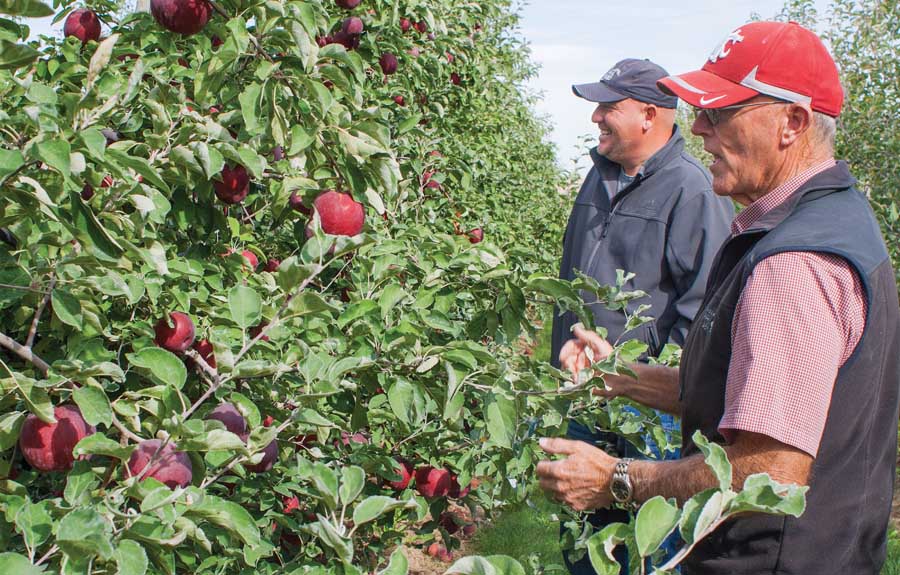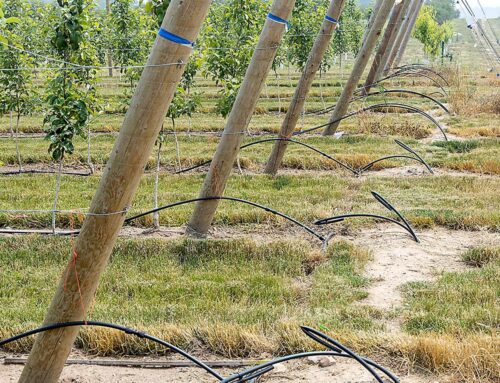
Tom Auvil, right, and Brandon Lewis discuss the unique characteristics of WA 38 during a field day on September 24, 2015 near Quincy, Washington.(Shannon Dininny/Good Fruit Grower)
WA 38 is a vigorous tree that needs minimal fertilizer and is best grown on rootstocks in the Malling 9.337 size range, says Tom Auvil, research horticulturist with the Washington Tree Fruit Research Commission.
Auvil spoke to growers during a visit in September to an evaluation plot in Quincy, Washington, where WA 38 was planted as trees on M.9.
The plot also has WA 38 trees that were grafted more than three or four years ago from other, less promising Washington State University advance selections.
Auvil said the WA 38 grafts grew from knee-high to above the top wire of the trellis in just one year and were amazingly uniform considering they were grafted onto a number of different cultivars.
When grown on more vigorous rootstocks, such as M.7 or M.106, WA 38 trees tend to produce a lot of blind wood.
Auvil said M 9.337 produces a much calmer tree than M.9 Nic 29, which in any case should be avoided in warmer areas because of its sensitivity to fire blight. For areas with a high fire blight risk, Auvil recommends Budagovsky 9 or one of the fire blight-resistant Geneva rootstocks.
Because WA 38 is a tip-bearing variety, growers should avoid tipping the trees, he said. “You don’t want to take a lot of the crop off. Fifty to 60 percent of the crop is on one-year wood, which is very, very different from any other variety.”
If limbs are allowed to grow long and fruit up on the tips, the trees will have long, pendant branches that can blow around in the wind. Another problem with pendant limbs is that they shade the fruit. The best strategy is to cut back the limbs.
“We’re always trying to keep that pendant wood pruned out of these tall spindle-type trees,” he said.
Auvil encourages growers to plant a pollinizer every 30 feet—one for every trellis frame they install.
A characteristic of WA 38 is that flower clusters naturally single down to one set fruit, which should make it an easy variety to thin.
WA 38 bears annually and growers should be able to consistently yield 80 bins per acre, Auvil said. •
– by Geraldine Warner






Leave A Comment